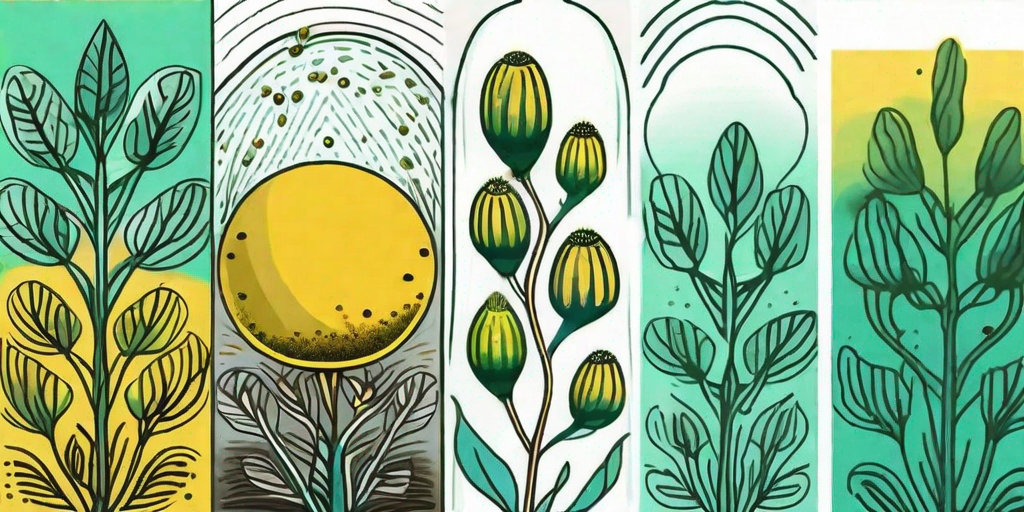
The humble mustard plant, a botanical marvel that has been adding a zing to our sandwiches and a kick to our curries for centuries. But have you ever paused mid-bite to consider the journey this spicy seed has taken to reach your taste buds? Probably not, but fear not, for we are about to embark on a fascinating exploration of the mustard plant's journey from tiny seed to mighty flavor.
The Origins of the Mustard Plant
Where did it all begin?
The mustard plant, known to the science boffins as Brassica, has its roots (pun absolutely intended) in the temperate regions of Europe. It was first cultivated over 5000 years ago, making it one of the oldest known spices. The ancient Romans were particularly fond of it, using it to spice up their feasts and, presumably, their gossip.
From Europe, the mustard plant spread to Asia and North Africa, where it was welcomed with open arms and hungry mouths. It's now grown worldwide, with Canada being the largest producer. Who knew our chilly neighbors to the north had such a spicy secret?
The Mustard Family
There are three main types of mustard plants: white (or yellow), brown, and black. Each one brings its own unique flavor to the table, from the mild tang of white mustard to the robust heat of black. It's like the Goldilocks of the spice world, there's a mustard for every palate.
And let's not forget about the mustard greens, the leafy part of the plant that's a staple in many Asian cuisines. These greens pack a peppery punch and are as nutritious as they are delicious. So, next time you're feeling adventurous in the kitchen, why not give them a try?
The Journey from Seed to Spice
Planting and Growing
Mustard plants are surprisingly easy to grow, making them a favorite among green-thumbed enthusiasts and lazy gardeners alike. They're planted in the spring and harvested in the fall, with the seeds being collected from the dried pods.
These plants are not just pretty faces, they're also good for the soil. They're often used as a cover crop to suppress weeds and pests, and to add nutrients back into the soil. Talk about a team player!
Processing the Seeds
Once harvested, the seeds are dried and then ground into a fine powder. This is where the magic happens. When mixed with water, the ground seeds undergo a chemical reaction that releases their fiery flavor. It's like a culinary fireworks display in your mouth.
But if you prefer your mustard with a bit more texture, whole grain mustard might be more your speed. It's made by mixing whole and ground seeds with vinegar and water. The result is a chunky, tangy spread that's perfect for sandwiches, sauces, and giving your dishes a gourmet twist.
Mustard in the Kitchen
Cooking with Mustard
Mustard is a versatile spice that can be used in a variety of dishes. It's a key ingredient in many marinades, dressings, and sauces, adding a depth of flavor that's hard to beat.
And let's not forget about mustard's starring role in Indian cuisine. It's used both as a spice and as an oil, lending its distinctive flavor to curries, pickles, and more. So next time you're enjoying a tikka masala, take a moment to appreciate the mustard's contribution.
Health Benefits
But mustard isn't just a pretty flavor, it's also packed with health benefits. It's a good source of selenium and magnesium, which are important for maintaining a healthy immune system. It also contains compounds that have been shown to have anti-inflammatory and anti-cancer properties. Who knew something so tasty could be so good for you?
So there you have it, the journey of the mustard plant from tiny seed to mighty flavor. It's a tale of culinary adventure, botanical brilliance, and spicy surprises. And the next time you reach for that bottle of mustard, you'll know just how much has gone into that little dollop of deliciousness.
FAQs
- What is the difference between yellow and brown mustard?
Yellow mustard, also known as white mustard, is milder and less spicy than brown mustard. Brown mustard has a more robust flavor and is often used in Indian and Asian cuisines.
- How is mustard oil made?
Mustard oil is made by pressing the seeds of the mustard plant. It's commonly used in Indian and Nepalese cooking.
- Can I grow my own mustard plants?
Absolutely! Mustard plants are easy to grow and can be planted in the spring and harvested in the fall.
Fun Facts About Mustard
-
Mustard seeds are tiny. It takes about 1,000 of them to make a single teaspoon of mustard.
-
The state of Montana in the USA is known as the "Mustard Capital of the World".
-
Mustard is one of the most popular condiments in the world, second only to salt.











